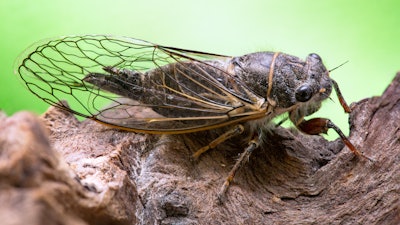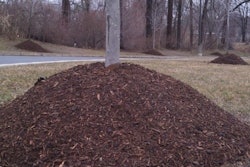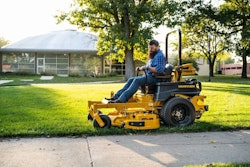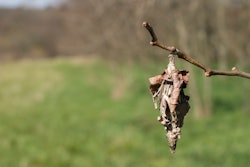
Even if you haven’t seen them, you might have heard them buzzing. In all different parts of the country, the Brood X cicadas have been emerging from spending the last 17 years underground—and some of your landscaping clients may be asking what they can do about them.
Evan Selby with Nature’s Mulch a landscape supplier in Louisville, Kentucky, says that he’s getting questions about this new brood of cicadas from landscapers on a daily basis. He shares more details about what can be done.
What are the Brood X cicadas?
Brood X are a group of periodical cicadas. This is different from annual cicadas. This group spends nearly their entire lives as far as one to two feet underground, feeding on the sap from tree roots. Then, on the 13th or 17th year (depending upon the type), mature periodical cicada nymphs emerge in massive quantities.
Selby says that’s what is happening now
Unfortunately, the Brood X cicadas can cause some tree damage once they’ve emerged. Surprisingly, they do not pose a risk of feeding damage like many other pests (such as Bagworms).
It’s actually the way that the females lay eggs that can be problematic. A female cicada has an “ovipositor” attached to her abdomen. She uses this part to cut into branches and twigs to deposit eggs in the grooves.
The good news is that not all trees are at risk, says Selby. Cicadas don’t like coniferous or evergreen trees. Most likely, they’ll go after deciduous trees. Again, while their feeding is not likely to harm the tree in any way, they do tend to lay their eggs where they’re eating, Selby says. This could mean deciduous trees on your property could become an egg-laying site.
Preventing damage
The biggest risk is to young trees which may be put under stress from the “cuts” made by the cicadas and have a harder time recovering from it.
Selby says that they do have products available that can control cicadas in their early stages if it’s a major problem for a client. However, many experts say that cicada damage can be prevented by wrapping trees. If your clients have young deciduous trees on their property, you can help them in wrapping the trees in netting. Just be careful to avoid bird netting, which usually has openings that are too large to keep cicadas out, says Selby.
If your clients’ trees do suffer some cicada damage, you can help your clients coax them back to good health with some extra TLC. Making sure that the trees receive adequate water and applying properly installed mulch rings around the trees can help.
The additional good news, says Selby, is that the cicadas will all be mostly gone by July. Adults only survive above ground for two to six weeks. You can reassure your clients that they’ll be gone before they know it.











